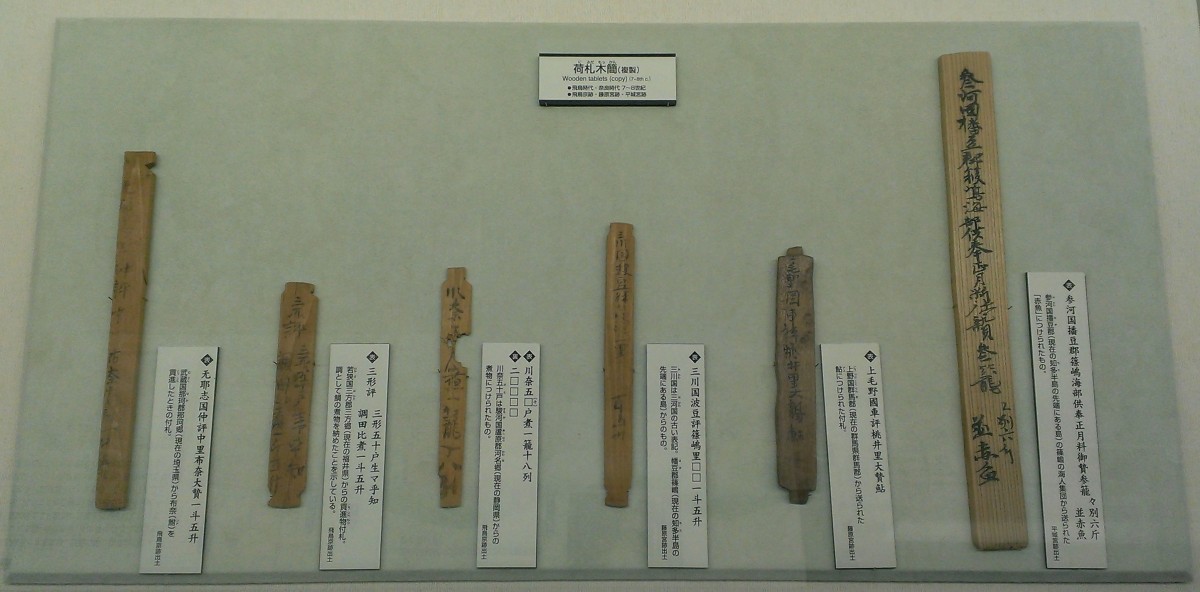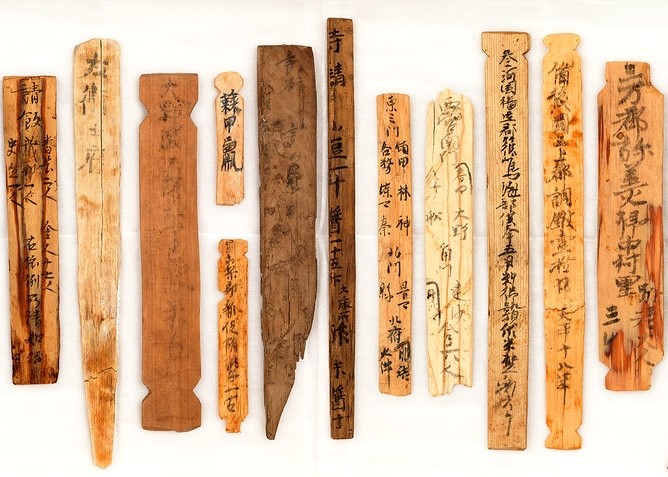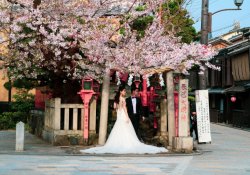Mokkan [木簡] are strip-shaped wooden plaques with writing found by archaeologists in Japan. These boards were used to convey messages before paper, also used in countries like China and Korea.
One of the characteristics of Mokkan is that it can be scraped, rewritten, and reused. Its writing was done with a brush and ink, but it can also be found in other forms such as scraped.
Today, the Japanese still have the custom of writing things on wood in temples, taking their luck or making a promise, but this does not indicate a relationship with Mokkan, since it became extinct with the emergence of paper.
We also recommend reading:
- The Kingdom of Wa and Ancient Japan
- Japanese Garden - Guide on traditional gardens of Japan
- Japanese Stationery – Vocabulary and Curiosities

Facts about Mokkan
Most wooden tablets found in Japan are dated to the 7th to 8th century. Mokkan was in use until the 10th century when writing materials were limited.
More than 150,000 Mokkan have been recovered, most of which were written in ancient Chinese and Japanese, thus showing the blending and evolution of the languages.
They can be found all over Japan, especially around the former capitals of Nara and Fujiwara. They were used for informal purposes, mailings, memos, documents, official records and other types of messages.

There are several types of Mokkan, they are basically any type of message, including curses, calligraphy, poetry, waka poems and others. Mokkan can have different formats too, although there are differences in the name.
Mokkan looks like strips of paper, with upper cuts at the ends, even forming a sword point. We recommend reading: Katana - The legendary swords of Japan




